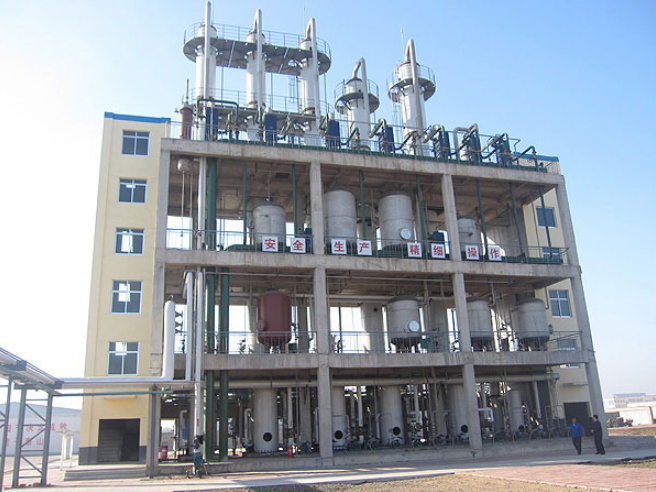Acetate series technology encompasses a range of processes used to manufacture various acetate compounds. These compounds, including ethyl acetate, butyl acetate, and cellulose acetate, are integral to numerous industrial applications. This article explores the production methods of acetate series technology, providing a comprehensive overview of the chemical processes, equipment, and innovations that define this field.
Overview of Acetate Series Compounds
Acetate compounds are esters derived from acetic acid and an alcohol. They are known for their solvent properties, versatility, and widespread use in industries such as coatings, textiles, and pharmaceuticals. Each acetate compound has unique properties that make it suitable for specific applications.

Ethyl Acetate Production
Ethyl acetate is one of the most widely produced acetate compounds. It is primarily used as a solvent in paints, coatings, adhesives, and pharmaceuticals. The production of ethyl acetate typically involves the esterification of ethanol with acetic acid. This reaction is catalyzed by an acid catalyst, such as sulfuric acid, under controlled temperature and pressure conditions.
Chemical Process
1. Esterification Reaction: Ethanol and acetic acid are mixed in a reactor, where the esterification reaction occurs. The reaction produces ethyl acetate and water.
2. Separation: The reaction mixture is then transferred to a distillation column. Here, ethyl acetate is separated from water and other by-products through fractional distillation.
3. Purification: The distilled ethyl acetate undergoes further purification to remove any remaining impurities, ensuring high purity for industrial use.
Butyl Acetate Production
Butyl acetate is another important acetate compound, widely used as a solvent in the coatings and printing industries. Its production involves the esterification of butanol with acetic acid.
Chemical Process
1. Esterification Reaction: Butanol and acetic acid react in the presence of an acid catalyst to form butyl acetate and water.
2. Distillation: The reaction mixture is distilled to separate butyl acetate from water and unreacted starting materials.
3. Purification: The crude butyl acetate is purified to achieve the desired quality and purity standards.
Advanced Production Technologies
Modern production methods of acetate compounds have evolved significantly, incorporating advanced technologies to improve efficiency, yield, and environmental sustainability.
Catalytic Distillation
Catalytic distillation is a technique that combines the chemical reaction and distillation process into a single unit. This method enhances the efficiency of esterification reactions by continuously removing the product (ester) from the reaction zone, shifting the equilibrium towards product formation.
Benefits
- Increased Yield: By removing the product continuously, the reaction can proceed to completion, resulting in higher yields.
- Energy Efficiency: Integrating reaction and separation processes reduces energy consumption compared to conventional methods.
- Cost Reduction: Fewer process steps and equipment requirements lead to lower production costs.
Reactive Distillation
Reactive distillation is another innovative approach that integrates reaction and distillation. It is particularly useful for reactions limited by equilibrium constraints, such as esterification.
Benefits
- Process Intensification: Combining reaction and separation in a single unit intensifies the process, making it more compact and efficient.
- Enhanced Conversion: Continuous removal of products drives the reaction towards higher conversion rates.
- Environmental Impact: Reducing the number of unit operations lowers the environmental footprint of the production process.
Sustainable Production Practices
Environmental sustainability is a key consideration in modern chemical manufacturing. The production of acetate compounds has seen significant advancements aimed at reducing environmental impact.
Green Chemistry Principles
Applying green chemistry principles to acetate production involves using renewable feedstocks, reducing waste, and minimizing the use of hazardous substances.
Examples
- Biocatalysis: Utilizing enzymes as catalysts for esterification reactions offers a greener alternative to traditional acid catalysts. Enzymes are biodegradable and operate under milder conditions, reducing energy consumption and by-product formation.
- Renewable Feedstocks: Sourcing ethanol and butanol from renewable resources, such as biomass, aligns with sustainability goals and reduces dependency on fossil fuels.
Waste Minimization
Waste minimization strategies are crucial for sustainable production. Implementing closed-loop systems for solvent recovery and recycling helps in reducing waste generation.
Techniques
- Solvent Recovery: Distillation and other separation techniques are used to recover and recycle solvents from the production process, minimizing waste and reducing raw material consumption.
- By-product Utilization: Identifying and utilizing by-products as feedstocks for other chemical processes can enhance overall sustainability and economic viability.
Conclusion
The production methods of acetate series technology are diverse and sophisticated, incorporating advanced chemical processes and sustainable practices. From ethyl acetate to butyl acetate, these compounds are essential in various industrial applications. Innovations such as catalytic distillation and green chemistry principles are paving the way for more efficient and environmentally friendly production methods.
For detailed information on sourcing high-quality acetate compounds and to discuss your specific requirements, contact us today. We are a trusted supplier committed to providing top-tier chemical solutions tailored to your needs.
















